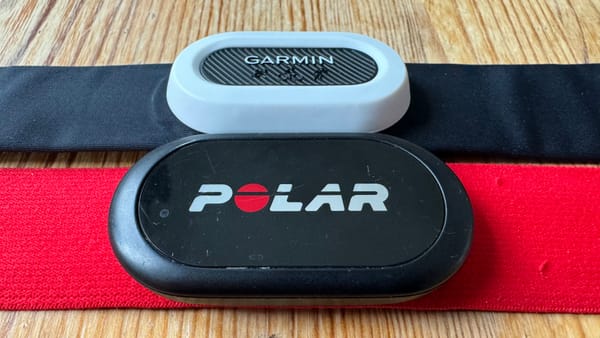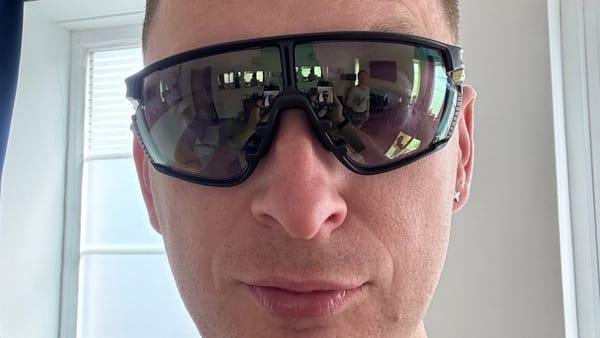On the Mio Link Heart Rate Monitor
Starting on Kickstarter, Mio were the first company that I know of to use an optical HRM in a sports stracker. Bright green LEDs shine through the skin, enabling a camera to see the wearer’s pulse. This is then exported either over BT LE or ANT+ to one’s preferred device. I own the Mio Link, which is their simplest device.
Pros
- The monitor is a fully sealed plastic puck in a rubber (silicone?) wrist band. This makes washing the sweat off easy, and doesn’t require putting an elastic belt in the wash, as one faces with a chest strap. Another benefit is that one doesn’t have the horrible experience of putting on a cold, wet chest strap that hasn’t dried yet.
- As it is designed to be worn on the wrist, it can be placed next to (within 1cm) a watch, such as the Suunto Ambit3 Peak. Coupled with the waterproof nature, this allows it to track, and my watch to record, my heart rate while I swim. Anyone who has worn a chest strap monitor while swimming will know that they wriggle and slide and are generally annoying, and that the extended range between the HRM and recording device requires the HRM to mantain data and sync data to the watch, which reduces compatability.
- To re-iterate that last bullet: the Mio Link can track your heart rate while swimming, and write the data back to a device sitting next to it on one’s wrist.
- Charing is easy, with a MagSafe-alike system that connets to a USB port.
- The devices supports both BT LE and ANT+, but it also supports both concurrently. This means that one can record to two devices, such as one’s Ambit and one’s Recon Jet (live view vs. analysis). A niche benefit.
- Easy to see heart-rate banding: the programmable five-c0lour LED blinks to indicate which band your heart rate is in, without troubling with numbers. It could blink more frequently, but it’s still useful. The banding is set via their mobile app, which seems to have bad reviews, but as I haven’t used it beyond the initial configuration isn’t an issue.
Cons
- Remember how it’s on a wrist strap? That strength is also a weakness. The loose end clips into the strap via two lugs, but can become unclipped. When you dive into a pool. Which means the HRM moves. Which means you have to — pause — restart the monitor — resume — which is annoying. It doesn’t happen very often, but it’s worth mentioning.
- Remember how it’s on a wrist? It’s surprisingly easy to knock something on your wrist. Knocking the HRM can cause it to move over your skin, which will cause it to lose calibration. Once the Link loses calibration, one has to restart it (see above bullet) to allow it to track one’s heart rate again. This is mostly solved by putting the Link on last when you’re getting ready.
- That wrist placement again. If one wears it for an activity that leaves one’s forearms pumped, like climbing, it gets uncomfortable quickly as it restricts blood flow. Note: this has never been a problem during calisthenics, running, swimming, or cycling: only climbing.
- Charging: I know, I said the charging is a pro, and it is: but if you forget its proprietary charger, and it runs out of battery…
I’ve seen it for £50 on Amazon, which probably makes it the cheapest HRM available, and with no compromises. Here’s its page on Mio’s site. Since getting it, it has become the only heart rate monitor I use regularly.



